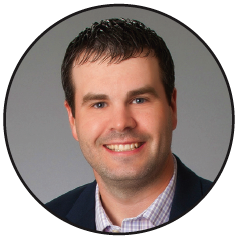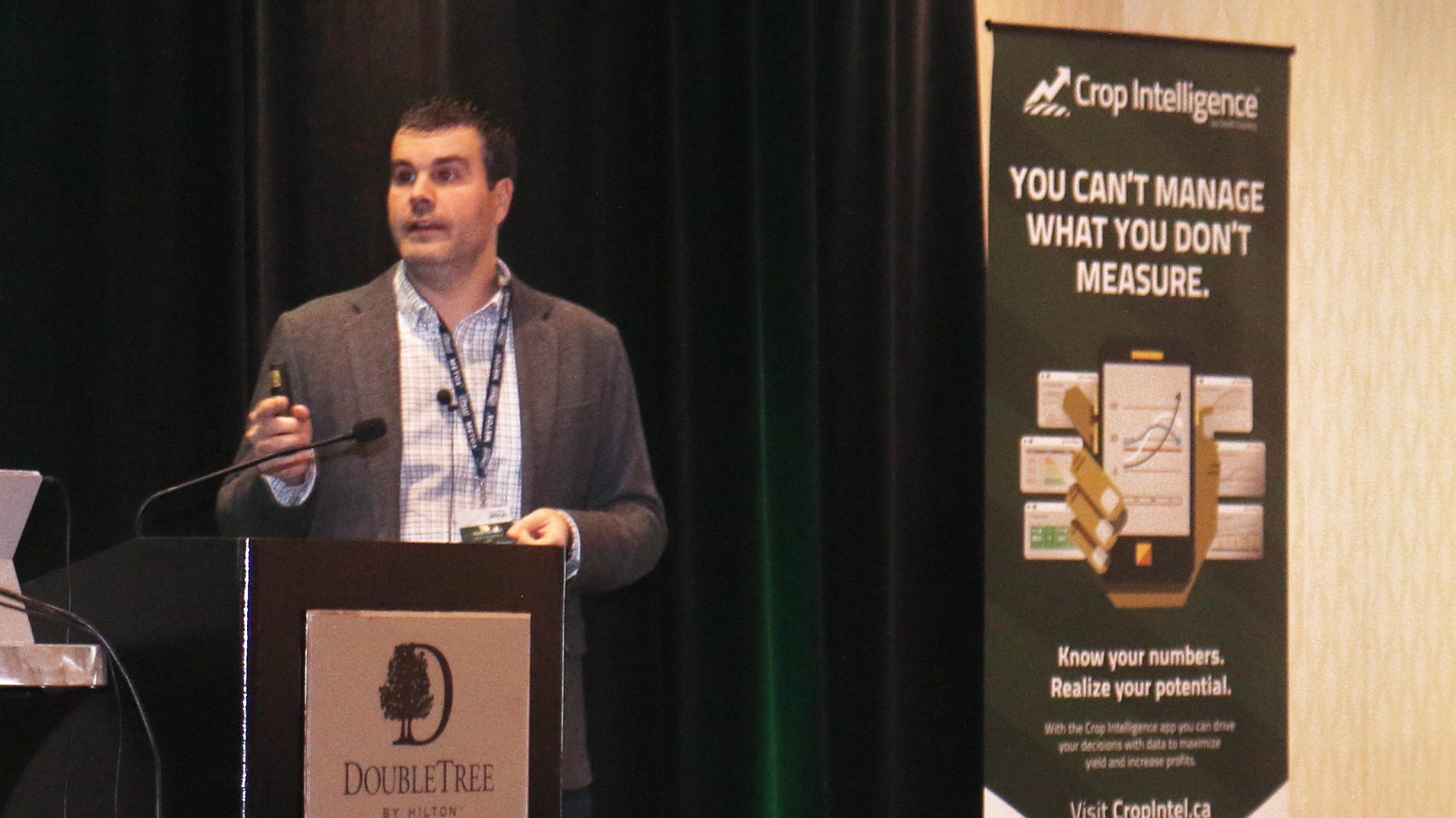Sean Taylor, Manager of Agriculture Services at MNP kicked off the first Crop Intelligence Annual Summit as the first keynote speaker with some strong insights to help maximize profits on your farm—have a solid business structure, understand your numbers and don’t forget about risk management.
“If we don’t know our own numbers on our farms, it’s going to be impossible for us to jump to that next level,” said Taylor. He walked the session through a farm profit analysis and some keys to success in areas such as gross margins, labour, building and machinery (LBM) expense, land, building and finance management (LBF).
He noted that when looking at the keys to high gross margins, management execution is an important aspect, and often doesn’t get talked about as much as it should. This is because it’s a reflection on ourselves of how we manage our farms, and it can be tough to reflect on what you maybe could have done better to increase your gross margin.
When lower gross margins do occur, Taylor found that farmers often ascribe a poor year to the weather or markets. But now there are tools available like Crop Intelligence that provide farmers with data to show that while you can’t control the weather, you can still know the potential of your land. Knowing your data and your numbers is vital.
Looking at the keys to solid LPM expenses, he explained that it’s important to remember that depreciation is real—no matter what your dealer tells you. Your equipment will always depreciate in value, so don’t go for the same price on resale. You need to know how much it actually costs you, which then informs how efficiently you’re using your equipment to move to capture more profit.
Taylor added that as related to LPM expenses we have to be aware that wages are increasing as more farms are requiring outside hires. He suggested to look at what it would cost for your family members to work if they were paid the actual wages of outside hires.
Looking at some keys to land, building and finance management, Taylor noted that every farm should be exactly equal in separating land ownership from farming ventures because you don’t want to find that you’re subsidizing a poor farm operation with your land.
Taylor moved into talking about risk management. Why should we care about risk management? Because from 2002 to 2017, the cost to run a farm has increased and since 2002, our cost of production has almost tripled. This shows that markets don’t care what your cost of production was, so you need to be proactive and know your cost of production and net worth (which together are your risk) in order to move forward with your operation.
He added that there are lots of programs in risk management that many people don’t know are available to them. Whether you love or hate any of these programs, the risk management sector is getting increasingly competitive for your business and there are much more options available than there were 10 years ago. Talk to these companies and get quotes to see what they could do to help manage your risk.
Taylor wrapped up his session by leaving the audience with the message that it’s impossible get to the next level without knowing your numbers, and that the changes you need to make won’t be quick fixes—you need to work to change if you want to maximize your profits.


